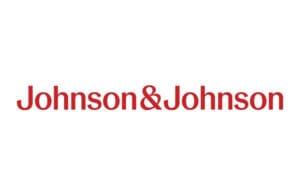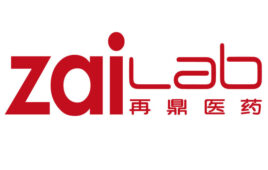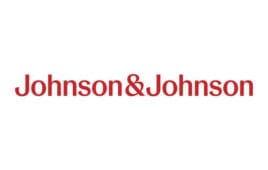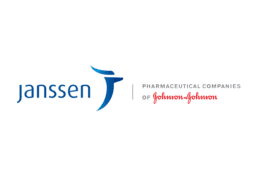 Johnson & Johnson’s nipocalimab, which works by targeting the neonatal Fc receptor (FcRn), has the potential to treat an array of autoimmune conditions. But the antibody recently hit a snag in the first-ever clinical study of an FcRn inhibitor in rheumatoid arthritis (RA), missing its primary endpoint. The development has sparked debate within the rheumatology community. “Now, there are some highly respected physicians who’ve said, ‘This is a failed trial,’” said Dr. Peter Taylor, the Norman Collisson Professor of Musculoskeletal Sciences at the University of Oxford. “I think that’s an incorrect interpretation.”
Johnson & Johnson’s nipocalimab, which works by targeting the neonatal Fc receptor (FcRn), has the potential to treat an array of autoimmune conditions. But the antibody recently hit a snag in the first-ever clinical study of an FcRn inhibitor in rheumatoid arthritis (RA), missing its primary endpoint. The development has sparked debate within the rheumatology community. “Now, there are some highly respected physicians who’ve said, ‘This is a failed trial,’” said Dr. Peter Taylor, the Norman Collisson Professor of Musculoskeletal Sciences at the University of Oxford. “I think that’s an incorrect interpretation.”
Johnson & Johnson is also pursuing a host of other autoimmune indications for nipocalimab. The FDA has granted it Fast Track designation for hemolytic disease of the fetus and newborn (HDFN) and orphan drug status for HDFN while EMA granted it orphan medicinal product designation for HDFN.
Breaking down the data from IRIS-RA
Johnson & Johnson is framing the results of the phase 2a IRIS-RA study, which administered nipocalimab with standard-of-care background therapy, as supporting its proof of mechanism in adults with moderate to severe rheumatoid arthritis, backing its progression into a combination study. The primary endpoint in the study was the Disease Activity Score 28 – C Reactive Protein (DAS28-CRP), a widely used measure in clinical trials to assess RA severity. Recipients of nipocalimab had numerically greater improvements at week 12 across primary and secondary efficacy endpoints, including DAS28-CRP. The cohort was also more likely to achieve ACR50 and DAS28-CRP remission compared with the placebo group.
Johnson & Johnson notes that the IRIS-RA study is the first to show that an FcRn inhibitor can reduce circulating IgG antibodies, including anti-citrullinated protein antibodies (ACPAs), which along with rheumatoid factor, are commonly used as biomarkers in clinical trials to assess the severity of rheumatoid arthritis.
In the IRIS-RA study, the nipocalimab treatment arm had a mean change in the DAS28-CRP score of –1.03, compared to –0.58 in the placebo arm. The least squares mean difference between the two arms was –0.45, which did not reach statistical significance (P value of 0.224). The data did reflect improvement with nipocalimab treatment in terms of both primary and secondary efficacy endpoints, including higher American College of Rheumatology 50% (ACR50) improvement criteria (15.2% for nipocalimab vs. 5.0% for placebo) and DAS28-CRP remission rates (21.2% for nipocalimab vs. 10.0% for placebo), alongside favorable outcomes in Health Assessment Questionnaire – Disability Index (HAQ-DI) scores.
A potential targeted treatment for RA patients with high autoantibody levels
The fact that the IRIS-RA trial showed improvement in nipocalimab participants across primary and secondary endpoints is “rather tantalizing,” Taylor said. “What the primary endpoint showed, along with a series of secondary endpoints, is that nipocalimab numerically outperformed placebo across all these measures,” he continued.
Taylor highlighted the significance of subgroups with above-median levels of autoantibodies. In these specific subgroups, approximately half of the patients treated with nipocalimab had higher response rates. Additionally, more than a quarter of them achieved an ACR 50 response, a measure of significant improvement in rheumatoid arthritis symptoms while none of the patients in the placebo group achieved this level of response.
While the overall efficacy for the entire cohort might be modest, the benefits for specific subgroups could support the potential for personalized treatment. "It's highly suggestive of efficacy in patients who have higher levels of circulating IgG antibodies," Taylor said.
The study is also noteworthy in that it is likely to be the first to "offer really compelling evidence suggesting that the autoimmune components of IgG are in fact pathogenic," Taylor added. "We've always suspected this, but until now, we haven't had confirmatory evidence. This study brings us as close as we've ever been to having such confirmation."
Future directions for nipocalimab in RA
The IRIS-RA study also raised the question of whether patients with elevated levels of anti-citrullinated protein antibodies who have had an inadequate response to one or more anti-TNF drugs respond to FcRn inhibition. The phase 2a DAISY study will pick up this question in more detail. In particular, it will explore the combination of nipocalimab with certolizumab in RA patients who have previously had limited success with other biologics.

IgY antibody diagram courtesy of Wikimedia Commons
Certolizumab pegol was chosen specifically because it lacks an Fc portion of the antibody, which prevents nipocalimab from accelerating its clearance. Biologic anti-TNFs work predominantly in the same way. "There are subtle differences, but the molecular construction is variable," Taylor said. In essence, an antibody has a "Y" shape and is composed of two heavy chains and two light chains. The top of the "Y" is the Fragment antigen-binding (Fab) region, responsible for binding to antigens.
In terms of anti-TNFs, there are monoclonal antibodies with an Fc tail, fusion proteins with an Fc tail fused to a TNF receptor and certolizumab pegol, which is a pegylated Fab’ fragment lacking an Fc tail. "Certolizumab pegol is a pegylated Fab' fragment," Taylor said. "If you imagine IgG as a 'Y' shape, certolizumab pegol is essentially the 'V' part of the 'Y' without the tail."
Thus, using certolizumab, an anti-TNF that lacks the Fc tail component, should prevent nipocaliomab from accelerating its clearance from the circulation. "The rationale for using certolizumab pegol, which I discussed with our colleagues from Janssen during the design of these studies, was to completely prevent any possible clearance of the concomitant anti-TNF antibody," Taylor said.
Filed Under: Biologics, clinical trials, Drug Discovery, Immunology, Rheumatology


